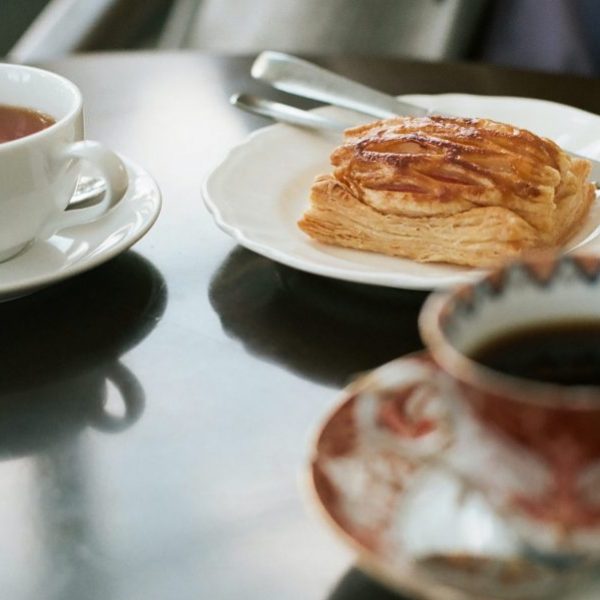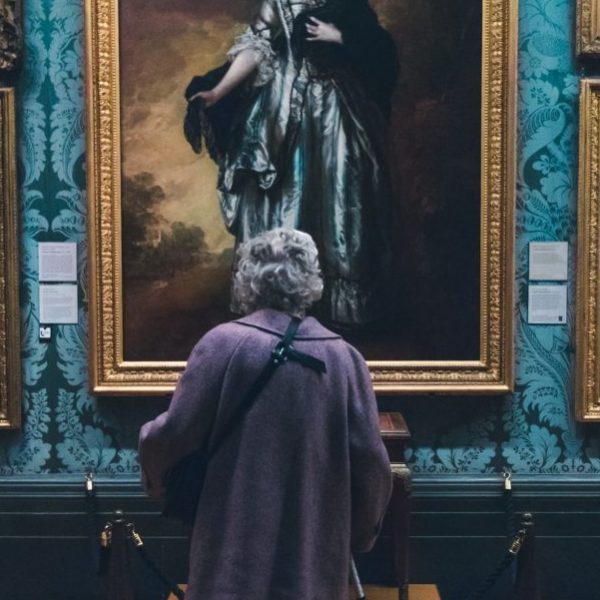For Helena Rubinstein, Beauty was Power
Ivy Sanders Schneider —
Makeup can act as a symbol both of liberation and oppression. Contentious and unavoidable, ads for lipstick line the subway, and giant mascaraed eyes blink from billboards. People across ages, genders, and geography wear it – a swipe of tinted chapstick, a little foundation, or maybe some eyeliner, if not more.
For many women, makeup provides a boost in confidence. In a 2012 study, 48% of women said they wear makeup because it makes them feel good, it covers the flaws in their skin, and they like how they look in it. For these women, makeup is a means of emancipation – allowing them to live a free, self-confident life. However, the same study observed that 44% of women report some kind of negative feeling (self-consciousness, unattractiveness) when they go makeup free, with only 3% of women claiming they feel more attractive barefaced. In this case makeup robs women of the ability to feel confident in their appearances without it.
Makeup can give the impression of unrealistic perfection, and has come under fire recently for its potential psychological side effects: women see flawless models and actresses in fashion spreads and advertisements, and conflate that unblemished performance with reality. It gives the illusion of good genes, good health, and good luck, and even “nude” makeup gives the illusion of flawless beauty without artificial aids.
There has been a push-back against makeup, with models and celebrities going barefaced on magazine covers, red carpets, and their personal instagrams and twitters. Some women argue that cosmetics are a chore, obligation, or performance for the male gaze. However, although cosmetic application is certainly performative, originally it was a performance of personal choice. In the early 20th century, makeup was only worn by actresses and prostitutes, and it was only due the promulgation and commodification of beauty by cosmetic magnate Helena Rubinstein and her rival, Elizabeth Arden, that lipstick became so widely acceptable that choosing not to wear it became the act of protest. “While today it is common to think of makeup as a mechanism for the objectification and sexualization of women, it was seen in the early 20th century as a means of asserting female independence and autonomy,” reminds Mason Klein, the curator for the new exhibition of Rubinstein’s life and art, Beauty is Power, now on display at the Jewish Museum. Initially, makeup was worn by women on the fringe, and regular women committed a small act of rebellion each time they applied it.
*
 Helena Rubinstein, a leading force in the cosmetic revolution, was born in Poland in 1872. The oldest of eight daughters, she left home for Australia in protest after her father attempted to push her into an arranged marriage. Women, awed by her clear complexion, were an enthusiastic clientele for a skin cream that Rubinstein sold. Eventually, Rubinstein took out a £250 loan to pay for enough cream to start her own shop. She established her business, Helena Rubinstein & Co., in 1903, and eventually turned her debt into a £12,000 credit. Her company thrived in Melbourne and she soon expanded globally – Paris and London first, and in 1915, New York.
Helena Rubinstein, a leading force in the cosmetic revolution, was born in Poland in 1872. The oldest of eight daughters, she left home for Australia in protest after her father attempted to push her into an arranged marriage. Women, awed by her clear complexion, were an enthusiastic clientele for a skin cream that Rubinstein sold. Eventually, Rubinstein took out a £250 loan to pay for enough cream to start her own shop. She established her business, Helena Rubinstein & Co., in 1903, and eventually turned her debt into a £12,000 credit. Her company thrived in Melbourne and she soon expanded globally – Paris and London first, and in 1915, New York.
Rubinstein’s company sold cosmetics as one component of a larger lifestyle. She pushed for women’s self-improvement in all areas of life, believing that a beautiful woman was a confident woman was a liberated woman. Her stores were the first beauty salons, modeled after the intellectual salons of Europe which fostered the discussion and dissemination of grand ideas. Similarly, Rubinstein’s salon’s offered more than aesthetic advice. She sold a new way of living, offering lessons in health and culture. She encouraged women to define themselves through their personal taste and choice in clothing, makeup, and décor. Rubinstein, who led by example, amassed a vast collection of modern, African, and oceanic art, and wrote, “women who visit the salons on a regular basis develop a sense of discrimination and appreciation…it is like visiting museums and recognizing the work of famous artists.”
Rubinstein, known as Madame to her employees, was a pioneer on many fronts. After introducing the women of Australia to face cream, she became the first, in 1910, to recognize and categorize skin types. Her classifications – dry, oily, combination, and sensitive – are still used today, a century later. In 1928 Rubinstein created the first waterproof mascara, and in 1958 introduced the first modern mascara with applicator brush.
“There are no ugly women, only lazy ones,” Rubinstein famously declared. Although problematic from a modern perspective that considers the financial burden of beauty, Rubinstein truly was a proto-feminst pioneer. While her rival, Elizabeth Arden, who founded the eponymous cosmetic corporation, Elizabeth Arden Inc., equated beauty with privilege, elevating her prices so her products were only availbe to the elite, Rubinstein firmly believed in equality through appearance. A recent T: New York Times Style Magazine article on the exhibition noted Rubinstein’s philosophy that “women could transcend their humble stations in life through refinement and taste,” just as she had done.
Makeup is a form of self-expression, one that has shaped aesthetic tastes and perceptions for decades, and has existed, in various forms, for millennia. In the end, the decision to wear makeup lies with the person who purchases and applies it. Rubinstein understood the links between the cultivation of art and beauty, just as she understood that beauty was first and foremost a performance.
*
Rubinstein’s intensely curated tastes extended beyond her physical presentation to her famed art collection. One of the first major collectors of African and Oceanic art, she was also one of the early proponents of Latin American and European modernism. Her collection included works by Pablo Picasso, Frida Kahlo, Max Ernst, Joan Miró, and Henri Matisse, commissioned portraits of herself by Andy Warhol and Salvador Dali, among others, and clothing designed by Cristóbal Balenciaga.
Mason Klein’s book, Helena Rubinstein: Beauty is Power, which accompanies the exhibition, explores Rubinstein’s remarkable history and her journey from a Polish emigrant to an Australian beauty shop owner to an American business magnate. It celebrates Rubinstein’s life and art, currently on display at The Jewish Museum in New York City. The exhibition collects, for the first time, paintings, sculptures, jewelery, and furniture belonging to Rubinstein, dispersed at auction after her 1965 death, and tracks the progress of her spectacular life, business, and art collection throughout the 19th and 20th centuries.
Ivy Sanders Schneider, a sophomore English major in Yale College, is an art & architecture intern at Yale University Press.

























